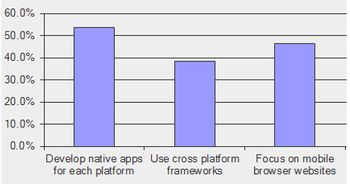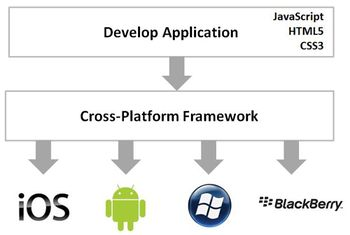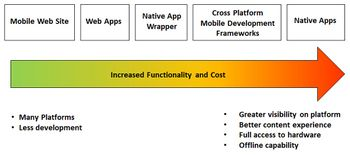OR/14/073 Implementation methods
| Bell, P, Shelley, W, Smith, R S, and Tomas, R. 2014. Reusable tools for smartphone apps: innovative activities in the European geological sector. British Geological Survey, OR/14/073. |
 |
There are a number of approaches that can be taken when developing smartphone apps. However, the survey found three main approaches that are leading developments (Figure 11). These include:
- Development of native apps, individually coded for each specific platform.
- The use of cross platform frameworks that enable an app to be created once using common web Application Programming Interfaces (APIs) and then exported for deployment on a range of different mobile platforms (Figure 12).
- The development of a web app designed for browsers, thus reaching a wide range of mobile devices.
It is possible that some overlap of approaches may occur in some app development.

There are advantages and disadvantages in all methods as outlined in Figure 13. Mobile websites are far quicker and less expensive to create and cover many more platforms in a single development. They display optimally on whichever screen size they are being viewed, as well as being accessible to desktop applications. Native apps, on the other hand, have greater visibility on the individual app platforms (Apple store, Google Play etc), generally provide a better content experience, offer offline capability and enable full access to hardware available on smartphones.


 |